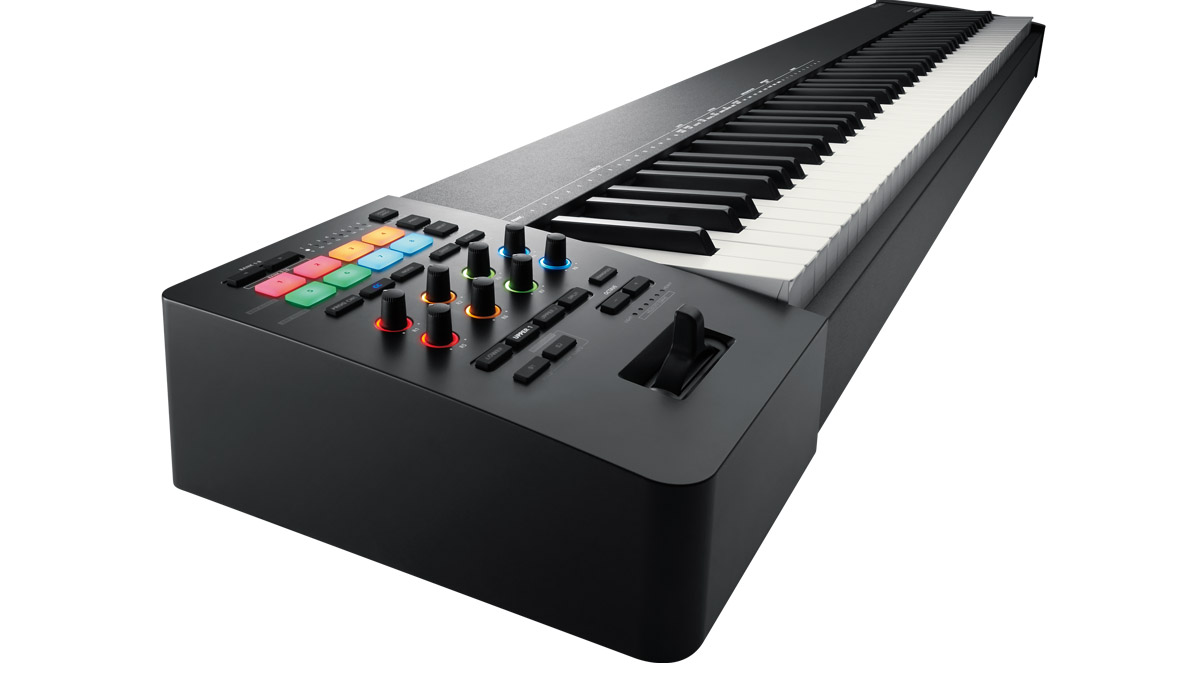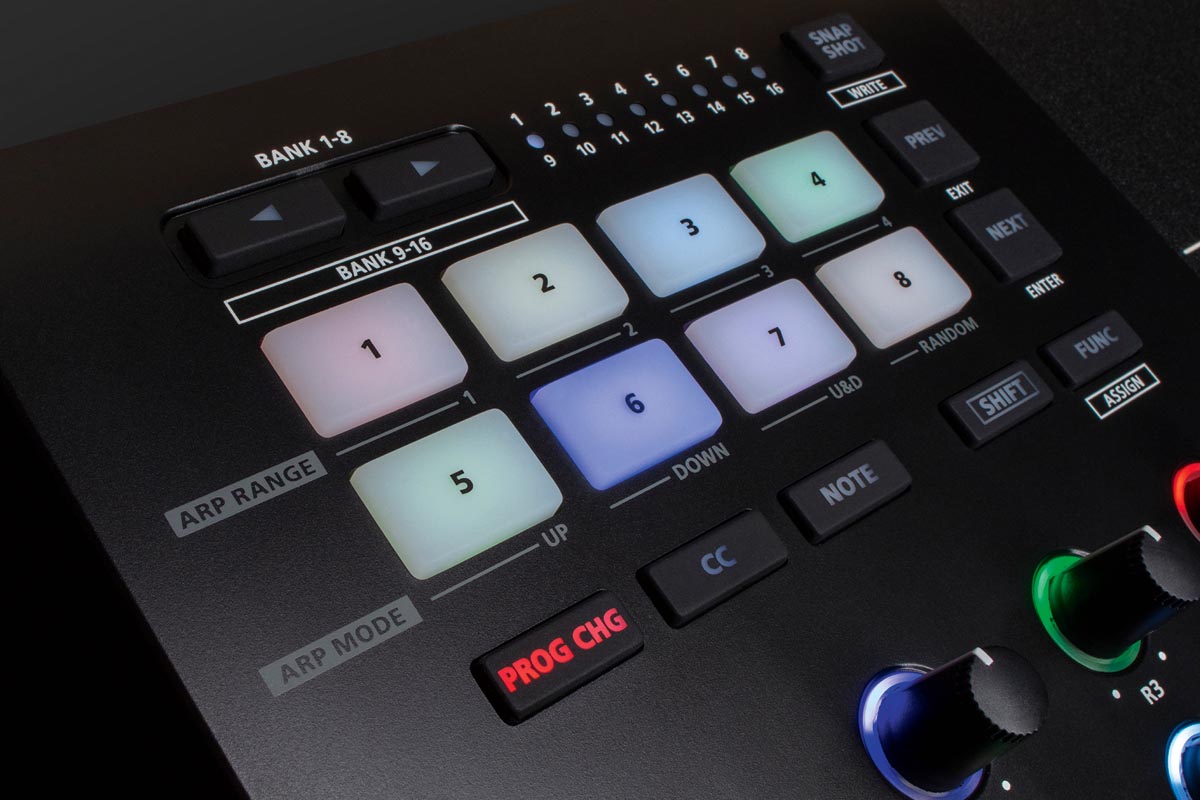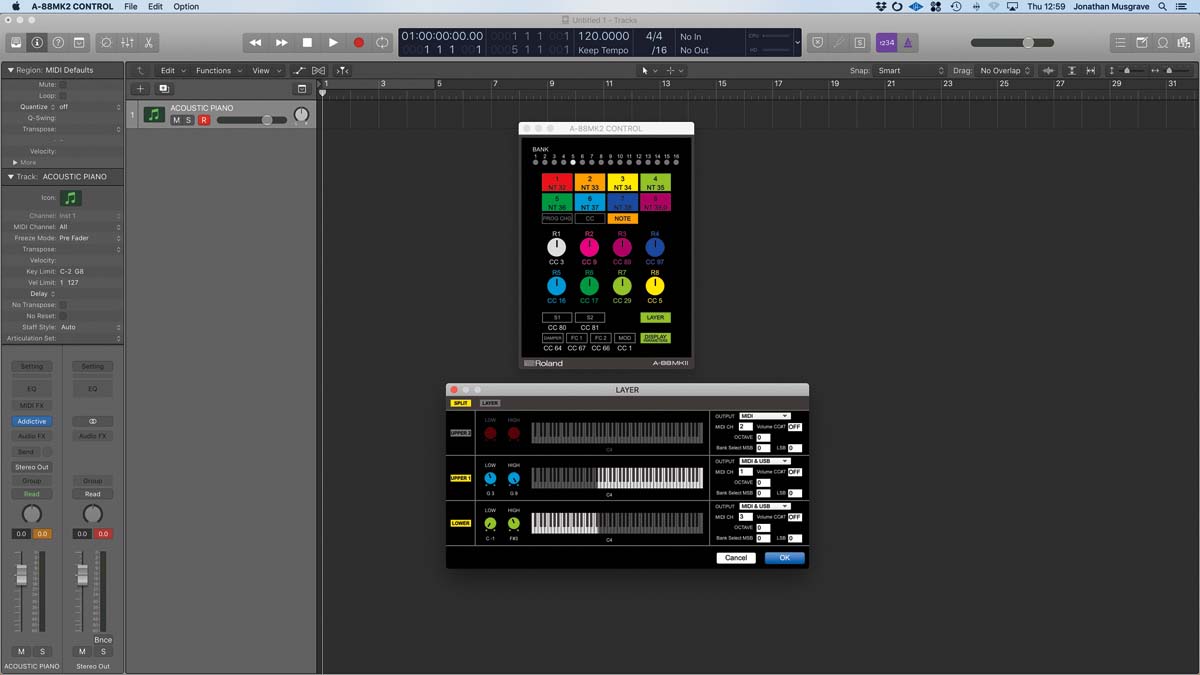MusicRadar Verdict
The A88MKII is a solid update, providing welcome controller features and a best in class hammer action keyboard.
Pros
- +
Excellently playable keyboard.
- +
Graded action with escapement.
- +
Compact footprint and not too heavy.
- +
MIDI and USB connectivity.
- +
Simple, powerful new controller panel.
- +
MIDI 2.0 support.
Cons
- -
Controller section layout.
MusicRadar's got your back
What is it?
Roland’s full size piano action MIDI keyboard controller, the A88, has many fans and rightly so as the action is excellent and the ivory touch key finish feels great. Nevertheless, time marches on and with almost 10 years on the clock a refresh was clearly on the cards. The result is the A-88MKII.
88 key controllers are by nature long and if you throw in a weighted piano action, they’re heavy too. However, much like its predecessor the A-88MKII is shallow front to back (274mm), has a reasonably low profile (119mm) and has a modest controls section to the left.
So, the overall footprint is reasonably compact, which is good news if you’re trying to accommodate it in a studio environment or transport it to a gig. At just over 16kg it’s also not unreasonably heavy.
The MKII’s control section to the left of the keyboard has been completely overhauled. This is quite obvious when you power it up (USB bus powering is supported) as the new backlit pads and knobs (eight of each) spring into action. Gone are its predecessor’s Roland-specific features such as support for Roland’s Supernatural modules and D-Beam, and the overall feel is far more universal.
They’ve squeezed a good number of features into a small space
The pads operate in three modes – Program Change, CC and Note – and are arranged as 16 banks which can be easily recalled using the arrow keys and Shift button. In Note mode pads respond to touch pressure, and in CC mode can be momentary or latching.
Meanwhile the knobs are regular travel rather than continuous encoder style. There are a few further options including two assignable control change buttons (S1 and S2), Transpose and Octave selectors, as well as playing Velocity Curve (six presets) and an onboard arpeggiator.

Pitch bend and modulation are handled by a combination lever, and the keyboard can operate in up to three layers or three split zones.
Want all the hottest music and gear news, reviews, deals, features and more, direct to your inbox? Sign up here.
Some onboard settings such as MIDI output channel can be made onboard using keyboard keys (there’s a legend just above them).
Other settings including the pad functions and backlight colours are primarily made using the new app (see box on opposite page). There is some overlap between the two which can lead to a bit of head-scratching at first.
Either way, panel settings including the selected pad bank, octave, layer settings, arpeggiator and so on can be saved as one of eight Snapshots which are stored even when you power down.
Performance and verdict
Overall we think the layout may have worked better with the knobs at the top, and the combination pitch bend modulation stick won’t appeal to everyone. That said, they’ve squeezed a good number of features into a small space.
A-88MKII’s connections are on the back panel just behind the control section. It has one USBC connector, MIDI in and out. Using its Split/Layer options you can specify whether MIDI, USB or both are used for each split or layer.

• Arturia KeyLab 88
A top keyboard controller, and all those sounds make it one of the best synths on the market too.
• Kawai VPC-1
If you need is a perfect software piano controller and nothing else, no other keyboard comes close to the Kawai VPC-1.
This is handy if you’re using DAW-based and hardware synths at once. In terms of pedal control you have one damper and two foot control inputs, so it’s compatible with Roland’s RPU3 piano-style triple pedal unit, their EV5 expression pedal, and their DP range as well as more generic damper pedals.
The A88MKII ships with two USB cables (Type C to Type C and Type C to Type A). As mentioned the keyboard is USB-powered, but you can use an external PSU, although this isn’t included. Last but certainly not least, the A88MKII is MIDI 2.0 ready.

The original A88 uses Roland’s PHA3 Ivory Feel-G weighted keyboard. However, since then their whole digital piano range has been overhauled and the latest design (PHA4) comes in three versions – standard, premium and concert. The A88MKII uses the PHA4 Standard action but don’t be fooled.
This is still a great design, with ivory-feel keys, 3-sensor key detection and key-specific progressive hammer action. This means the keys feel heavier lower down and lighter higher up but the change is gradual. The keyboard also incorporates escapement, which replicates the real piano feel when the key is pressed halfway down.
This all adds up to an excellent feel that really captures the nature of a real piano. The ivory finish, more satin than shiny, helps finesse key finger contact and with six Velocity Curve settings (from light to heavy) it’s easy to ind a playing response that’s both comfy and works with the MIDI instrument you’re triggering.

Despite its improved controller section, the A88MKII is not that groundbreaking in its controller features. However, the piano action is class-leading at this price point. Given that this isn’t the sort of unit one changes that regularly, it’s also great to be future-proofed with MIDI 2.0 support.
Overall the A88MKII is very capable and competitively priced update, but it’s winning feature is it’s an absolute joy to play.
MusicRadar verdict: The A88MKII is a solid update, providing welcome controller features and a best in class hammer action keyboard.
The web says
"The MKII is a pleasure to work with too, with its impressive build quality and assured touch lending itself to live and studio environments. Its onboard arpeggiator, and chord memory and zoning capabilities make it something of a workhorse, able to perform well on the stage and under the lights or as a studio-bound master controller."
MusicTech
Hands-on demos
Roland
Bax-shop | Bax Music Goes
Guitar Center
Specifications
- TYPE: MIDI keyboard controller
- KEY FEATURES: 88-key PHA-4 Standard Keyboard: with Escapement and Ivory Feel, 8x assignable illuminated pads, 8x assignable illuminated knobs, Pitch Bend/Modulation lever, 2x assignable buttons, Damper pedal, 2x foot control inputs, USB 2.0 interface, 8x programmable pads/pots
- WEIGHT: 16.3kg/36lbs
- CONTACT: Roland
Computer Music magazine is the world’s best selling publication dedicated solely to making great music with your Mac or PC computer. Each issue it brings its lucky readers the best in cutting-edge tutorials, need-to-know, expert software reviews and even all the tools you actually need to make great music today, courtesy of our legendary CM Plugin Suite.

